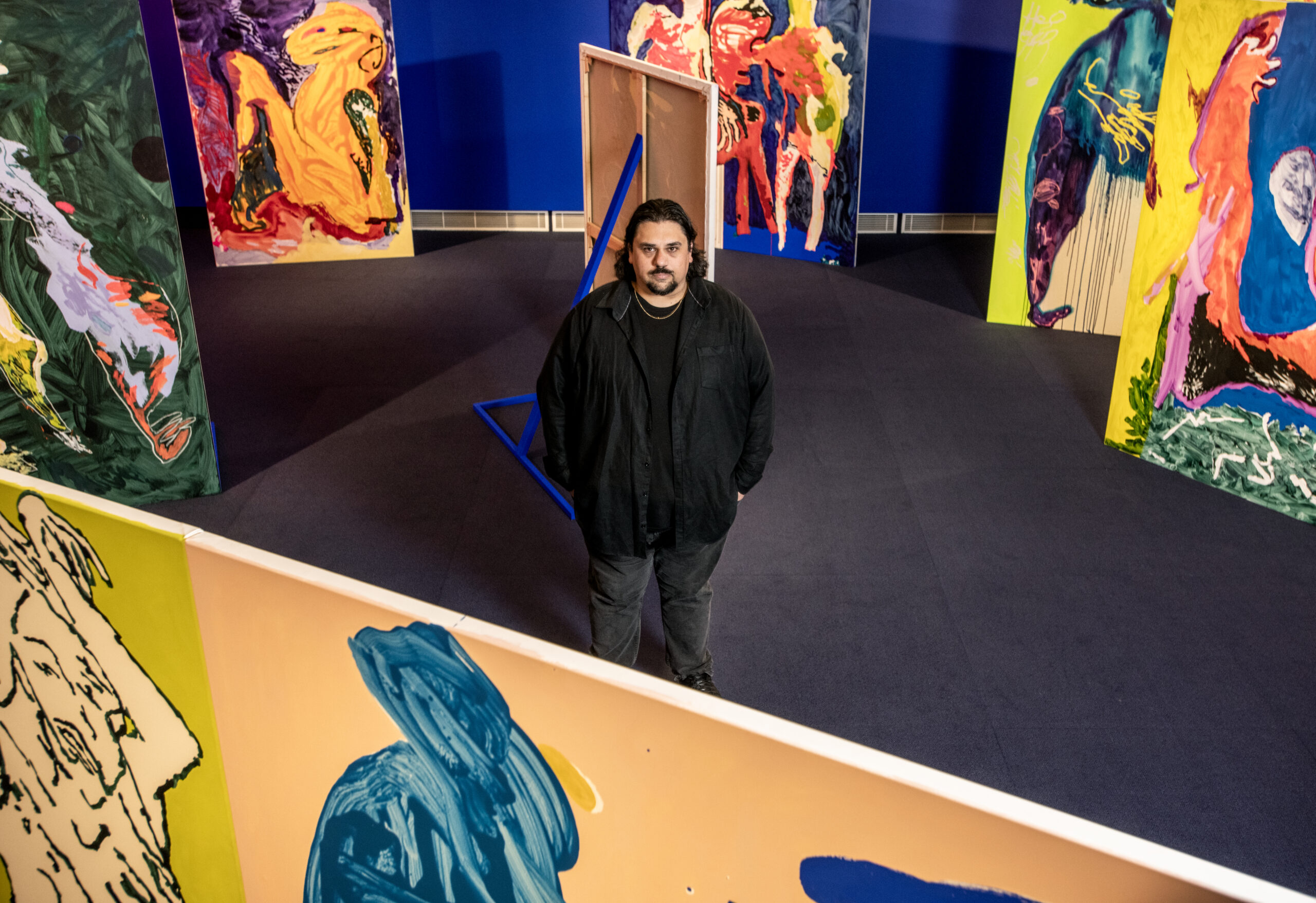
“A gesture forward”: Tom Polo
4 Jul 2025
Tom Polo’s paintings act as membranes between the self and the other, the artist and the viewer, and as surfaces upon which committed gestures build worlds crackling with charge and energy. The paintings do not sit comfortably against walls; they encroach the spaces beyond their frames. Often shown as part of installations, they show us their backs.
Polo’s exhibition in part of your mind, i am you at Ngununggula is staged as a five-act sequence, a choreographed succession of painterly and theatrical gestures, organised such that “you have to go through the beginning in order to get to the end.” The exhibition sees the artist restage works from his more than 15-year-long career alongside new works made for the show, highlighting their aliveness to reinterpretation and reorientation.
To coincide with the opening of Polo’s exhibition, the artist shares insights into a practice that shuttles between portraiture and abstraction, reflects on his love of the colour blue, its ties to performance and staging, and draws on experiences from his residency in New York. For clarity, the conversation has been organised into thematic categories.
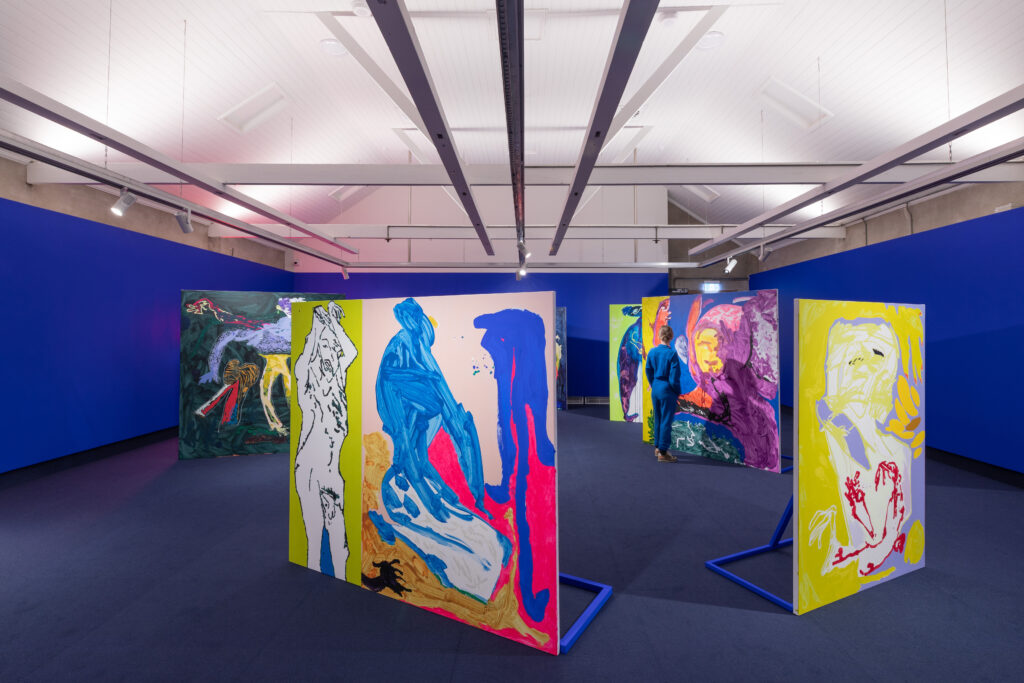
Installation view of Tom Polo, in a part of your mind, i am you, Ngununggula, 2025, photographed by Jessica Maurer, courtesy of Ngununggula.
On portraiture
My works sit somewhere within the broad definitions of portraiture, though it’s often slippery to know exactly who the subject of a portrait is, or from where they have emerged.
In recent bodies of work, the people within my orbit have become a more acute influence on what I make, including some who have spent time with me in the studio while I’m working. The portrait isn’t about rendering a direct likeness or producing a faithful image. Instead, inspiration arrives indirectly—contingent, sometimes accidental—and the work becomes a conduit or stand-in for an interpersonal exchange. It might be a gesture: the way an arm rests on a chair, or how the colours of a person’s clothing meet and overlap. A story about loss or disappointment. Capturing these moments evokes—or perhaps reconstructs—a sense of intimacy, both past and present. It traces the narrative of that shared time in the studio.
On abstraction
Each of my canvases hold a world of its own. I work in abstraction because I want to create narratives that are open-ended, ones that can be felt or understood in different ways and are vessels themselves for interpretation. They function as reminders of feelings, moments, gestures or spaces that resist clear definition. They speak to and of the body, both in mark making and in scale. Abstraction allows me to communicate ideas that are emotional and psychological, making space for both ambiguity and resonance. I think openness is essential.
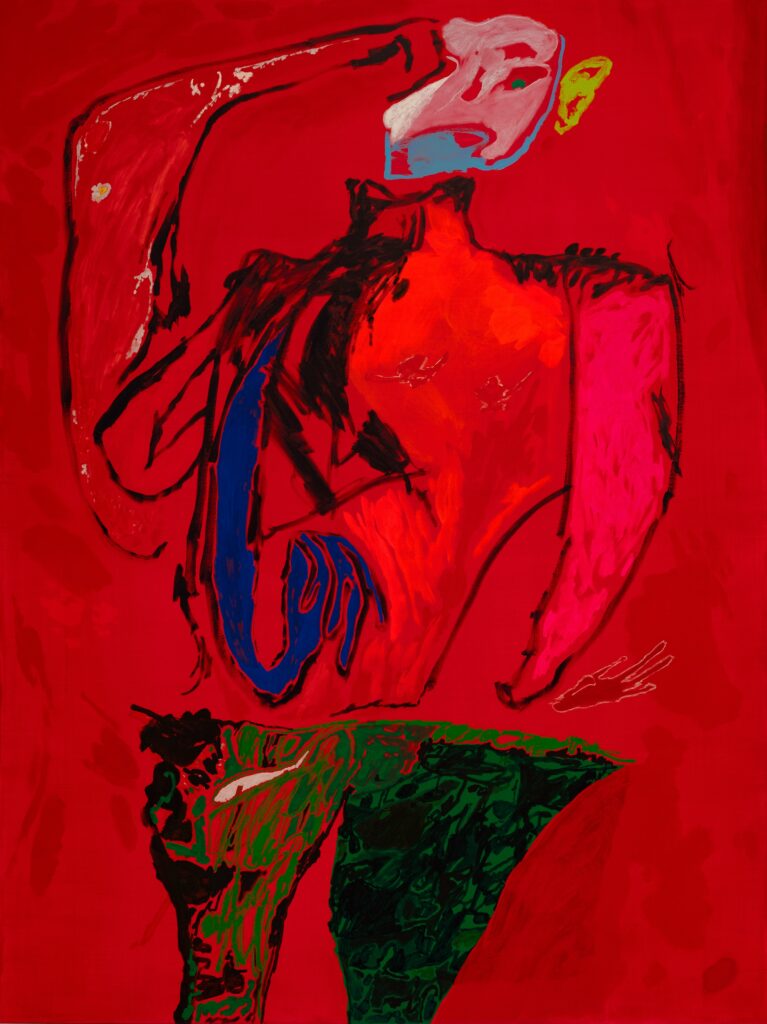
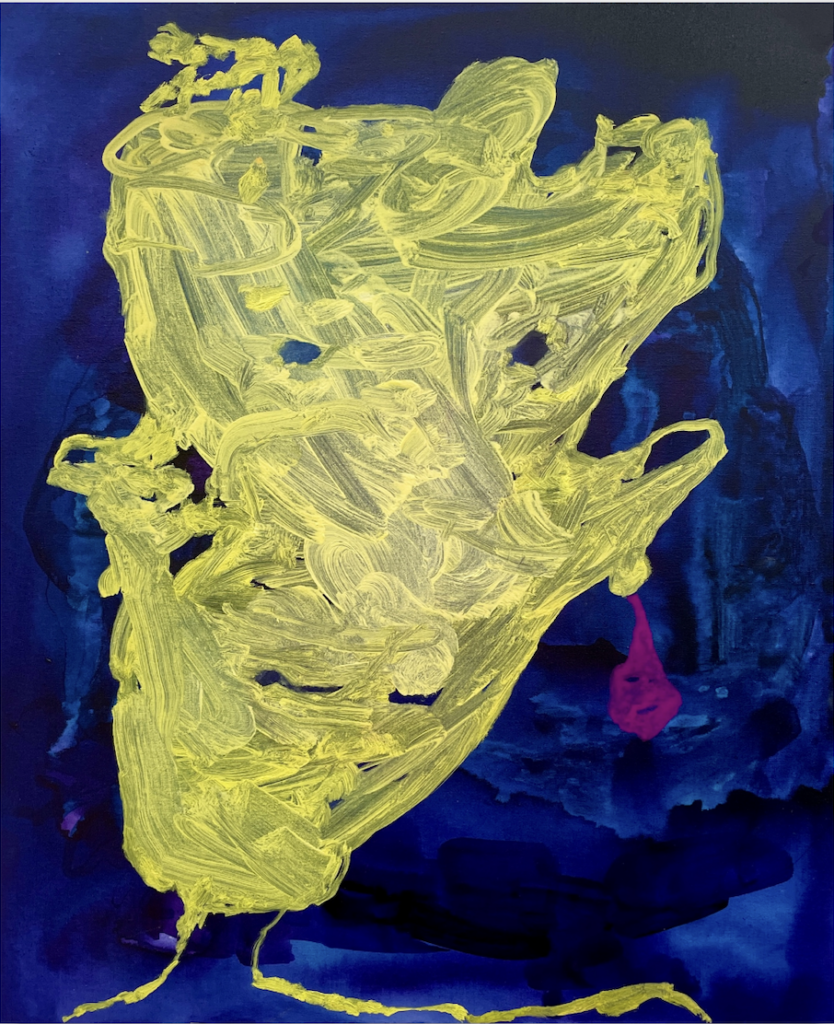
Tom Polo, suffer a fool, 2024, acrylic, flashe and oil stick on canvas, 182 x 138 cm; Tom Polo, judgemental earring, 2024, acrylic and oil stick on canvas, 60 x 50 cm
On drawing
I’ve been returning to drawing more often lately, out of a need to reimagine what immediacy looks like in my practice. For me, there’s something about drawing that seems to clear away doubt. It bypasses the overthinking that can creep into image-making over time.
In drawing, ideas tend to unfold with more ease. While I don’t see it as a precursor to painting, it often guides me toward it — helping me think through form, composition or gesture in a way that feels intuitive and direct.
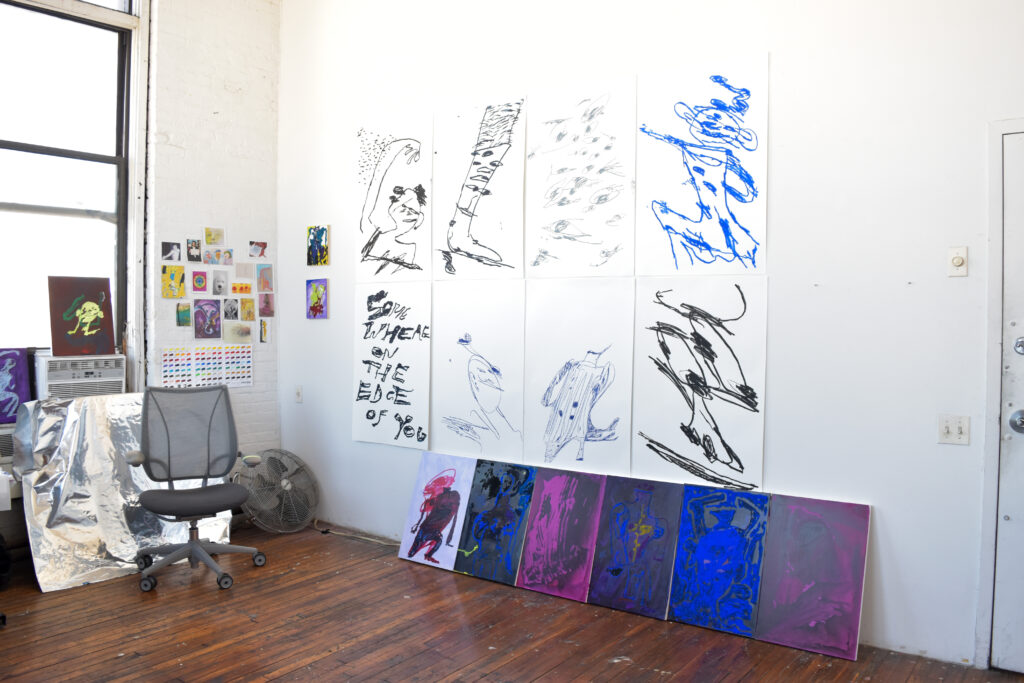
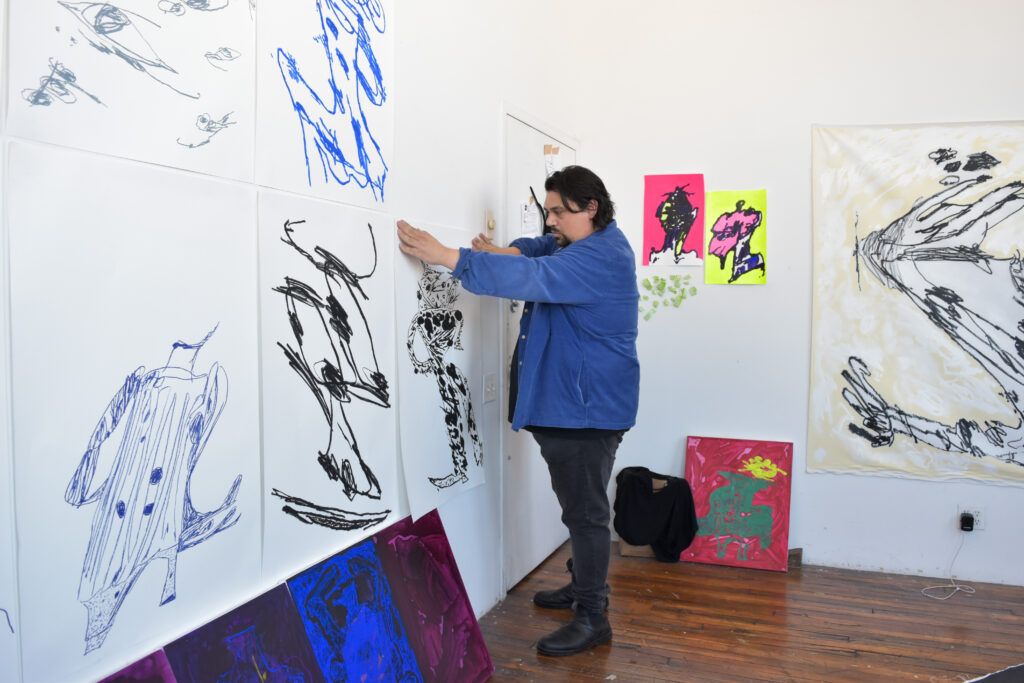
Tom Polo’s studio at ISCP, New York, photographed by Gabrielle Gowans, courtesy of the artist.
On commitment
I’ve also been working with oil stick recently—a medium that insists on commitment. Each mark is finite, and you can’t go back. I don’t make preparatory drawings; the act of making is what it is — a gesture forward. I’m committed to the marks I make.
Commitment is a central idea for me—as is the presence of doubt. Even though the narratives in my work remain open to interpretation—an outstretched arm, for example, could be read as protective or desiring—figures or forms in my recent work seem to sit more on the surface, less veiled by layers of colour. This, again, feels intentional and is a forthright way for them to be seen and heard, while still rooted in ambiguity and emotional fluidity.
On the performance of the everyday
Last year, I spent four months in New York for a residency at ISCP [International Studio & Curatorial Program]. How we stage and frame things has long been part of my practice, but in New York, my awareness of and fascination with social spaces became especially heightened. The city thrives on archetypes—observing its rhythms while focusing on particular ‘characters’ felt like watching a contemporary Commedia dell’arte. This hyperbolic social theatre became a space of potentiality for my work and inspired new large-scale works on paper and canvas.
For the show at Ngununggula, the paintings don’t just hang on walls—they intervene in the space, fragmenting it, as I’ve done before. As audiences, you encounter the works body-to-body, face-to-face, feeling-to-feeling. They ‘feel like’ something familiar, yet also act as portals to somewhere else, mimicking gestures that are theatrical but also life-like. You see both their fronts and backs—a sobering or reassuring reminder that they are, after all, just canvases. The curtain is drawn.
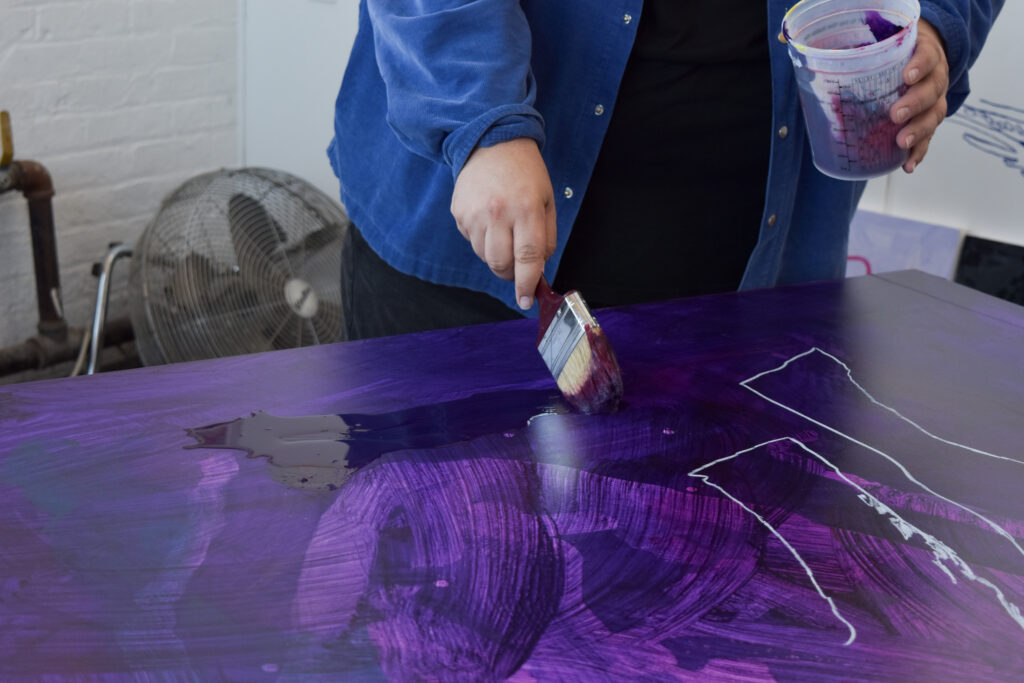
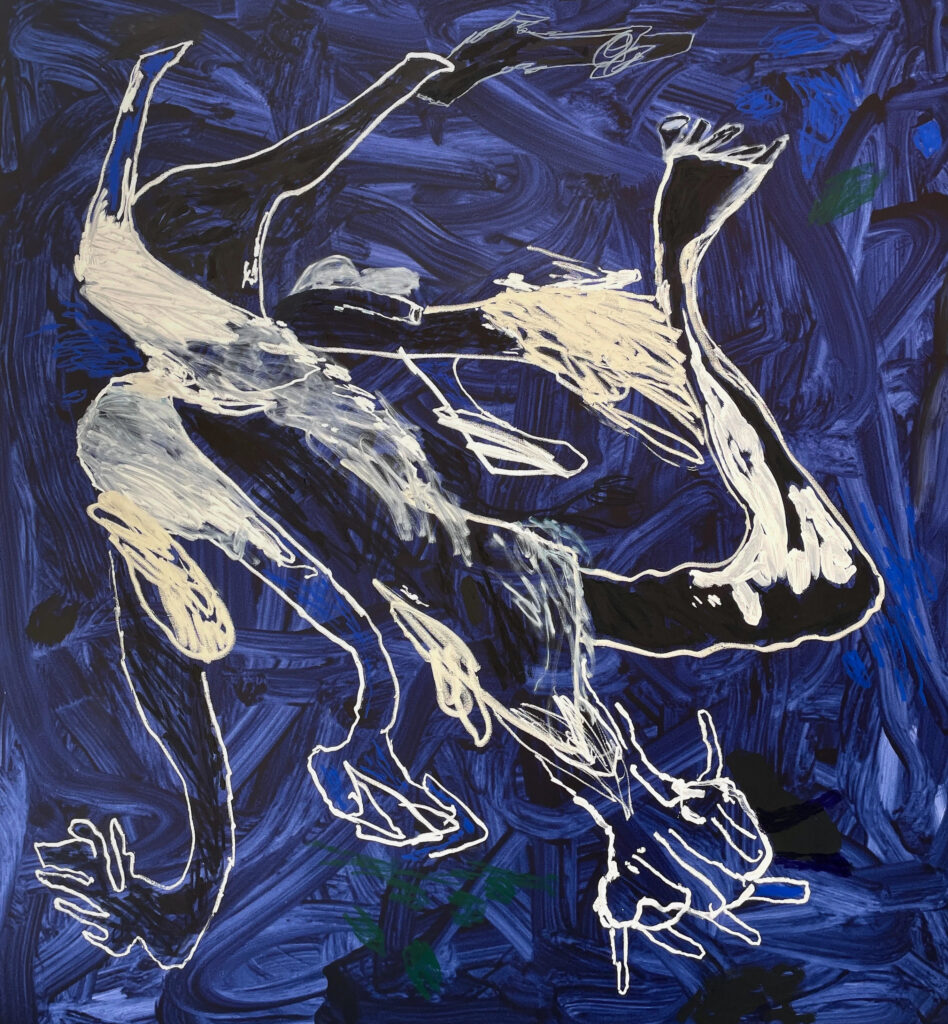
Process image from Tom Polo’s studio, photographed by Gabrielle Gowans, courtesy of the artist; Tom Polo, bitten, 2023, Acrylic and oil stick on canvas, 213 x 198 cm
On colour
My use of colour is both conscious and instinctive. I use it to mirror the emotional tone of a moment or the atmosphere of a space — not to describe it exactly, but to evoke a mood.
It’s not always easy to explain, because it’s akin to feeling — like a rhythm. Sometimes harmonious, sometimes dissonant. It’s a gut response. It’s about what feels right to me.
My frequent and ongoing use of chroma-key blue is both a visual and aesthetic choice, and relates to its connection with world-building in film and editing. I’m deeply interested in ‘potentiality’—in film, this colour is used to create space for something else to be inserted, something not yet visible. In my practice, the blue becomes a metaphorical space of possibility, projection, or absence—a visual placeholder for things not yet fully formed, or things we imagine.
On intuition
I’m interested in how patterns emerge in unconscious ways — the habits we form, the behaviours we inherit or repeat, often without realising. This interest extends across both life and studio practice: from how we exist and interact with others, to how colours, shapes, or forms sit together in a composition.
There’s a kind of mirroring between interpersonal relationships and painterly relationships — how things touch, resist, overlap or harmonise. In the studio, I’m often guided by intuition, noticing how certain elements seem to coalesce or come undone. These moments feel reflective of broader emotional or social patterns — the messiness, the tension, the unexpected points of connection.
One of the major works in the show at Ngununggula — a six-metre-long, three-panel painting titled stage sequence (in a part of your mind, i am you) — draws on these ideas. A shapeshifting protagonist moves and unfurls across the composition — stretching, gesturing, reaching — until it reaches its final state offering no resolution.
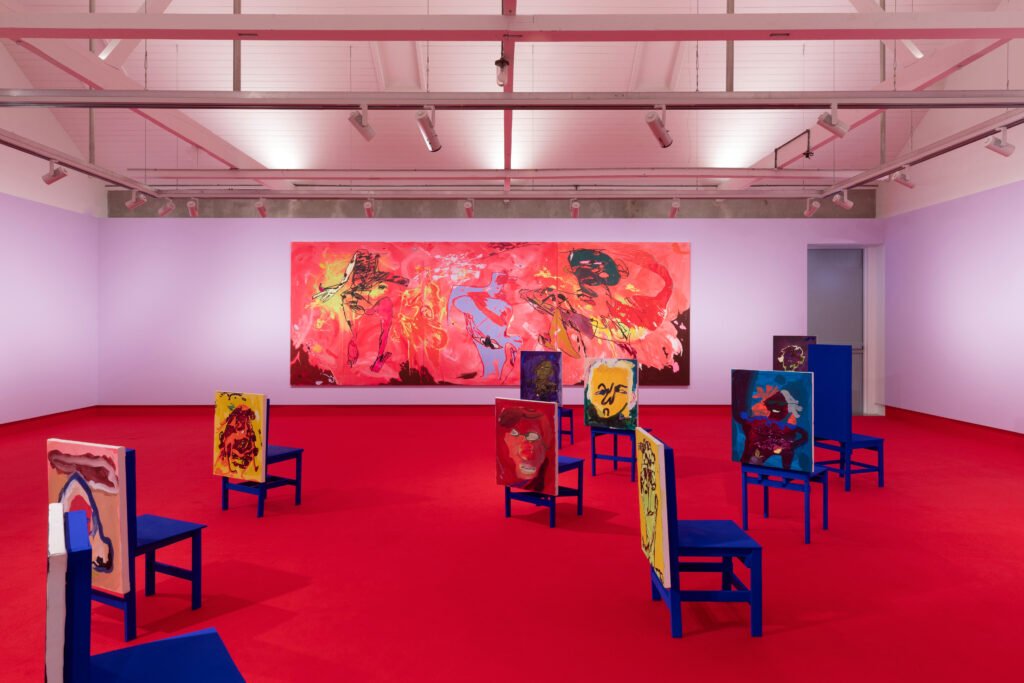
Installation view, Tom Polo, in a part of your mind, i am you, Ngununggula, photographed by Jessica Maurer, courtesy of Ngununggula
On his father’s chair
There are a dozen or so chairs in the exhibition, based on a version my father made for an exhibition in 2017, using salvaged wood and masonite from his backyard and shed. For me, that original chair sculpture became a symbol of presence — a way of thinking about the visible and invisible body, about support structures, and about what holds or carries us, both physically and emotionally.
Across the show, these new chairs support small-scale paintings, acting as stand-ins or understudies — quiet witnesses within the space. Like the original, they’re painted in chroma-key blue, ironically heightening their visibility and lending them a slightly caricatured quality.
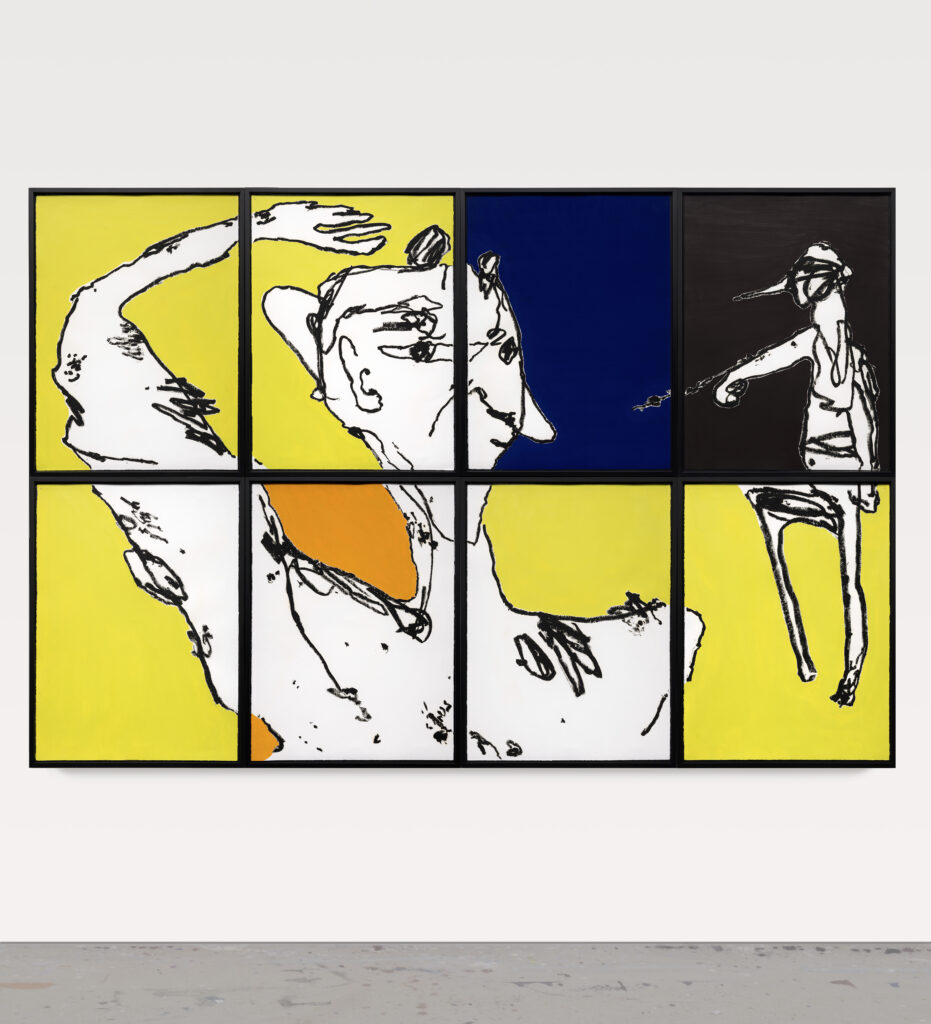
Tom Polo, The Rehearsal (Wild Accusations), 2025, acrylic, gouache and oil stick on paper, framed, 159.5 x 238 cm (installed)
On windows
The exhibition also includes two series of works on paper that I developed during my time in New York. The first is a set of large-scale, multi-panel works that, when installed as a grid, suggest a kind of windowpane — as if you’re looking through to a performance or a narrative unfolding. For me, these fictions feel like rehearsals — like the act before the act.
The second series, titled when windows are walls, includes a dozen intimately scaled, dark blue windows. These mini scenes — or what I’ve been thinking of as ‘stages for one’ — are voyeuristic and solitary, sitting somewhere between private and public performance.
For me, both series explore the idea of being both near and afar — up close and yet somehow shielded, protected, or masked. They speak to questions of perspective and framing — the tension between looking in and looking out an emotional viewfinder.
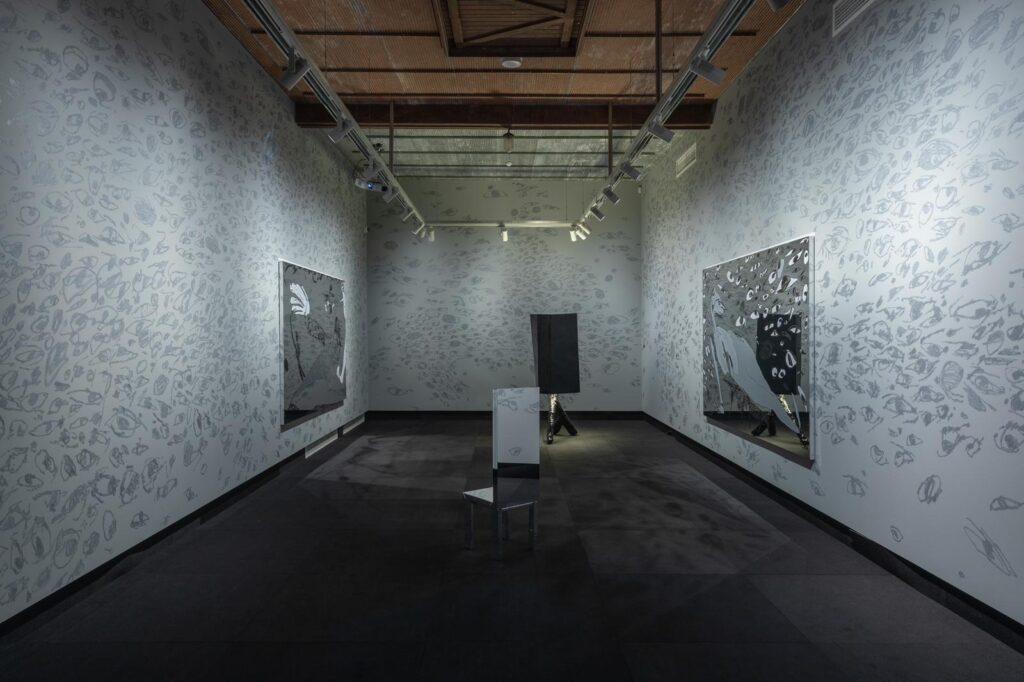
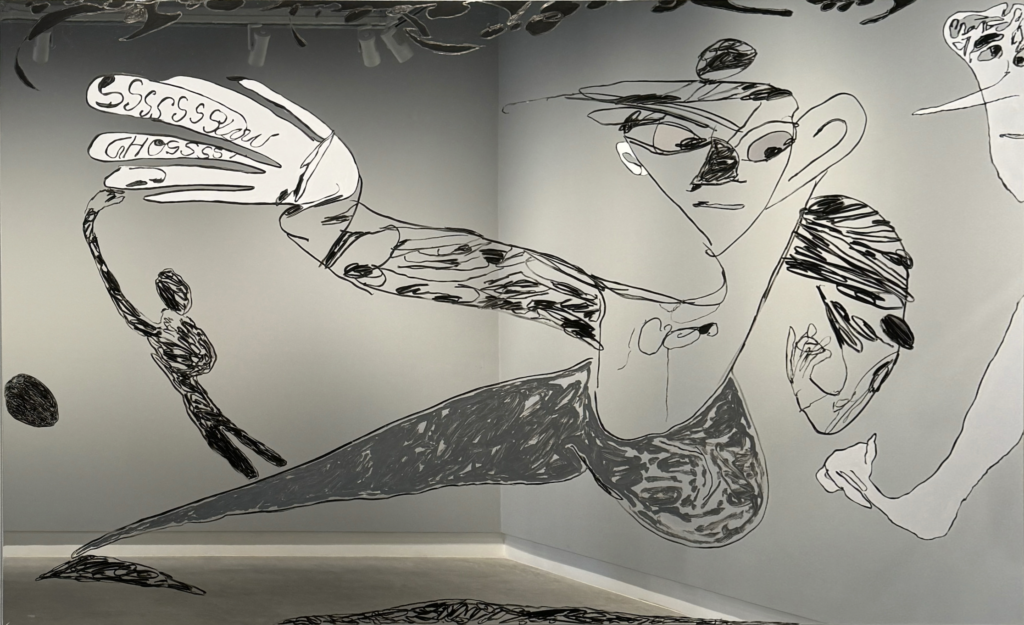
Installation views of Tom Polo, in a part of your mind, i am you, Ngununggula, 2025. Featuring Urs Fischer, Lamp, 2000-2005, cast aluminium, enamel paint, light bulb, electric cable, Collection of the Art Gallery of New South Wales, Gift of the John Kaldor Family Collection 2011, Donated through the Australian Government’s Cultural Gifts Program. Photographed by Jessica Maurer, courtesy of Ngununggula; Tom Polo, slow ghost (somewhere on the edge of you), 2025, oil stick and acrylic on flexmirror, 183 x 298 cm
On the self
A new body of work, titled slow ghost, is made using oil stick and acrylic on mirrored surfaces. These more personal works extend earlier explorations of psychological mirroring, and continue my interest in presence, absence and the emotional echo that exists in the space between.
The mirrored surface functions not only as material but as a conceptual device—one that introduces a continuous loop of reflection, observation and projection. It implicates the viewer, heightening the performative roles of looking, watching and (self) surveillance.
in a part of your mind, i am you is on view at Ngununggula 28 June to 24 August 2025.